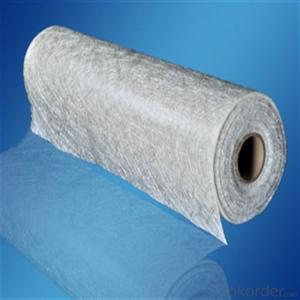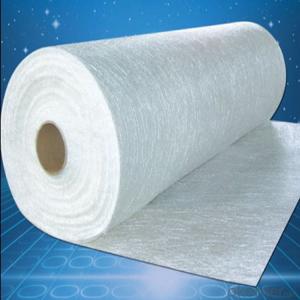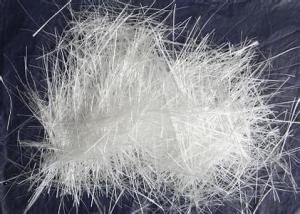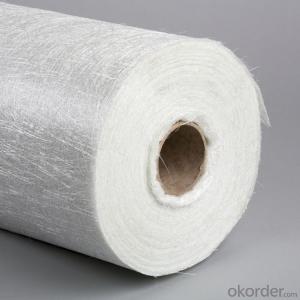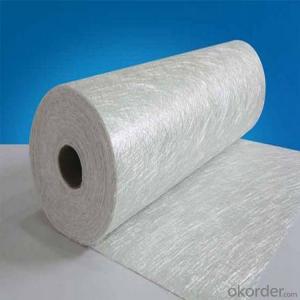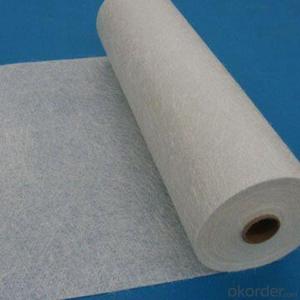450gsm Powder Fiberglass Chopped Strand Mat C Glass
- Loading Port:
- China main port
- Payment Terms:
- TT OR LC
- Min Order Qty:
- 1 kg
- Supply Capability:
- 5000 kg/month
OKorder Service Pledge
OKorder Financial Service
You Might Also Like
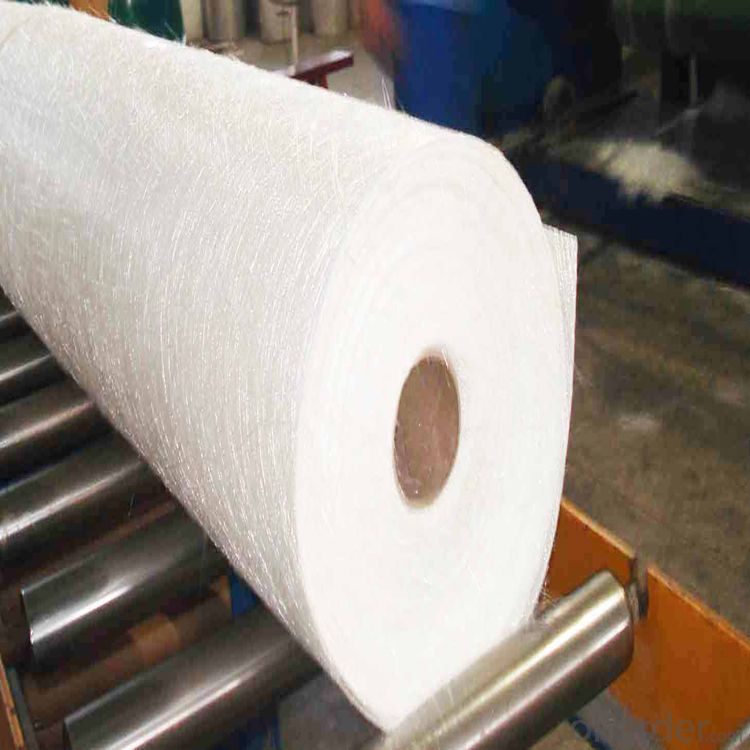
Product Description:
Chopped strand mat is made from chopped glass fibers, which are bonded with powder or emulsion binders. It can be used in hand lay-up process and continuous laminating process to produce FRP products, such as plates, lighting board, hull, bathtub, cooling towers, anti-corrosion materials, vehicles.
Features:
Uniform thickness, softness and hardness good.
Good compatibility with resin, easy completely wet-out.
Fast and consistent wet-out speed in resins and good manufacturability.
Good mechanical properties, easy cutting.
Good cover mold, suitable for modeling complex shapes.
Application:
fiberglass thickness is suitable for application by hand lay-up, reinforce and machine FRP molding,
including interior decoration of vehicles, boat hulls, complete set of sanitary equipment, anticorrosive pipes, tanks, building materials, tables, chairs, panels and all kind of composite FRP products.
Specifications:
Item | Over Density | Moisture Content | Chop Density | Polyester Yarn | Width |
(g/m2) | (%) | (g/m2) | (g/m2) | (mm) | |
EMK300 | 309.5 | ≤0.15 | 300 | 9.5 | 50-3300 |
EMK380 | 399 | 380 | 19 | ||
EMK450 | 459.5 | 450 | 9.5 | ||
EMK450 | 469 | 450 | 19 | ||
EMC0020 | 620.9 | 601.9 | 19 | ||
EMC0030 | 909.5 | 900 | 9.5 |
Special products are available according to customer’s requirement.
Product Packaging:
Each Surface Tissue is wound onto a paper tube which has an inside diameter of 76mm and the mat roll has a diameter of 330mm. The mat roll is wrapped up with plastic film,and then packed in a cardboard box or wrapped up with kraft paper. The rolls can be vertically or horizontally placed. For transportation, the rolls can be loaded into a cantainer directly or on pallets.
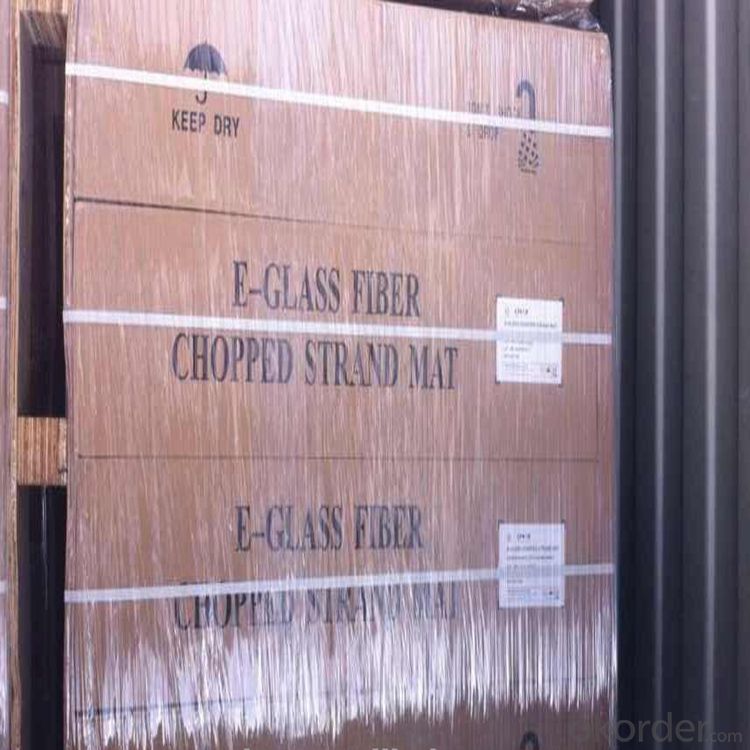
Product Storage:
Unless otherwise specified, Chopped Strand Mat should be stored in a dry, cool and rain-proof area. It is recommended that the room temperature and humidity should be always maintained at 15℃~35℃ and 50%~75% respectively.
Company Information
CNBM (China National Building Material) Group is the largest comprehensive building materials group in China that in integrate scientific research, manufacturing and logistics into one entity. The largest building materials and equipment specialists in China. Upon State Council approval, today CNBM owned more than 300 subordinate manufacturing factories and servicing companies. There are 6 fully owned public listed companies and 11 partially owned with substantial shares public listed companies. In many of these fields, CNBM is playing the leading role in the building industry in the country.

Order Information
Ordering please specify:
1. the product code, 2. weight, 3. width, 4. order quantity, 5. packaging, 6. special requirements please specify.
FAQ:
1. How long will you get reply?
Any inquiry will be replied within 24 hours. Usually we will reply within 12 hours.
2. How long is warranty period?
We provide 3 year warranty period.
3. What is your MOQ?
Any order quantity is available.
4. Can you provide sample?
Yes, samples are in stock. we can offer free sample for you.
5. Payment terms?
We can accept L/C, T/T, Western Union, Paypal etc.
6. Do you offer OEM service?
Yes, we can print customers’ logo on the packaging;
And the size and specification can be produced and design according to your demand.
7. What is the Production Lead Time?
15-20 days for bulk production after confirm the order.
- Q:What are the different surface finishes available for fiberglass chopped strand?
- Some of the different surface finishes available for fiberglass chopped strand include smooth, textured, matte, gloss, and pigmented finishes.
- Q:How does the fiber dispersion affect the processing time of chopped strand composites?
- Fiber dispersion plays a critical role in the processing time of chopped strand composites. Generally, chopped strand composites consist of short fibers that are randomly dispersed within a matrix material. The dispersion of these fibers determines their orientation and distribution throughout the composite. When the fibers are well dispersed and evenly distributed, they can effectively reinforce the matrix material, leading to improved mechanical properties of the composite. This uniform dispersion allows for a more efficient transfer of load between the fibers and the matrix, resulting in enhanced strength and stiffness. In terms of processing time, proper fiber dispersion can facilitate the flow and wetting of the matrix material during the manufacturing process. When the fibers are well dispersed, they can be more easily impregnated by the matrix material, reducing the time required for complete wetting and ensuring a more homogeneous composite. On the other hand, poor fiber dispersion can lead to several issues that can significantly affect the processing time. Clustering or agglomeration of the fibers can occur, creating regions of high fiber concentration and voids in the composite. These areas may not be adequately wetted by the matrix material, resulting in reduced interfacial adhesion and compromised mechanical properties. Furthermore, uneven fiber dispersion can cause flow issues during the manufacturing process, such as clogging or blockages in the equipment. This can lead to interruptions and delays, increasing the processing time. In summary, fiber dispersion directly influences the processing time of chopped strand composites. Well-dispersed fibers enable efficient wetting, enhance mechanical properties, and facilitate a smoother manufacturing process. Conversely, poor fiber dispersion can lead to various issues, including reduced interfacial adhesion and flow problems, ultimately prolonging the processing time.
- Q:How is the delamination resistance of fiberglass chopped strand composites determined?
- The delamination resistance of fiberglass chopped strand composites is determined through various mechanical tests, such as interlaminar shear strength (ILSS) testing, double cantilever beam (DCB) testing, or mode I fracture toughness testing. These tests evaluate the ability of the composite material to resist delamination or separation between layers under applied stress or loading conditions.
- Q:How does the fiber alignment affect the properties of fiberglass chopped strand?
- The properties of fiberglass chopped strand are greatly influenced by the alignment of its fibers, playing a crucial role in determining its overall performance. When the fibers are parallelly aligned, they contribute to higher strength and stiffness by efficiently distributing and bearing the applied load. Conversely, if the fibers have a random or non-aligned orientation, the fiberglass exhibits more isotropic properties, meaning that it displays similar characteristics in all directions. While this may result in a decrease in overall strength and stiffness compared to aligned fibers, it can be advantageous in certain applications where isotropic properties are desirable, such as in molding complex shapes or for impact resistance. Furthermore, the alignment of the fibers also affects the dimensional stability of the fiberglass chopped strand. Aligned fibers act as reinforcement, minimizing shrinkage and expansion of the material. This aligns with the principle of anisotropy, where the material exhibits varying properties in different directions. On the other hand, non-aligned fibers may lead to greater dimensional changes due to the lack of reinforcement and a less ordered structure. In conclusion, fiber alignment plays a significant role in determining the properties of fiberglass chopped strand. Aligned fibers enhance strength, stiffness, and dimensional stability, while non-aligned fibers provide isotropic properties and specific advantages in certain applications. The choice of fiber alignment depends on the desired characteristics and requirements of the final product.
- Q:Is fiberglass chopped strand compatible with different surface treatments?
- Different surface treatments are compatible with fiberglass chopped strand. Fiberglass chopped strand, being a versatile material, can be utilized with various surface treatments to enhance both its performance and appearance. Common surface treatments encompass painting, coating, laminating, and gel coating. These treatments serve to enhance the adhesion, durability, and resistance of the fiberglass against factors like UV radiation, chemicals, moisture, and abrasion. Moreover, the compatibility of fiberglass chopped strand with diverse surface treatments allows for customization and versatility in numerous applications, such as the automotive, construction, marine, and aerospace industries.
- Q:Is glass fiber reinforced plastic products industry a polluting industries?
- Code of short cut glass fiber is ABS, glass fiber chopped into all kinds of plastic, like BMC fiber diameter, chopping yarn, Jushi chopping glass fiber, PP, alkali free glass fiber, are made by wet process chopping method. Because the appearance is a certain length of velvet barba: 9 - 13μm water content, PBT.1% : Using special treating compound to draw raw silk, chopped with uniform dispersion, glass steel, BMC in industrial use, feeding ways, improve the impact toughness of concrete, the performance depends on the performance of the basic raw material of glass fiber filament: R2O content. 3, Chopping glass fiber, so it can be used in the field of filament can not be suitable for: Application of silane resin, auto parts, friction materials, glass fiber chopped is added to prevent crack occurrence and expansion of the role of cement and concrete, it could be enhanced obviously.
- Q:What is the difference between fiberglass and carbon fiber? ?
- The strength of carbon fiber is higher than that of glass fiber. Carbon fiber is conductive, while glass fiber reinforced plastic is not.
- Q:Is fiberglass chopped strand resistant to UV radiation?
- Fiberglass chopped strand is known for its resistance to UV radiation, in general. Typically, the resin utilized in fiberglass manufacturing is carefully formulated to endure sunlight and other environmental elements, such as UV radiation. Nevertheless, the degree of UV resistance may differ based on the particular resin type and production method employed. To enhance the UV resistance of fiberglass chopped strand, protective coatings or treatments might be applied in certain instances. It is recommended to refer to the manufacturer's specifications or technical data sheets to ascertain the precise UV resistance of a particular fiberglass product.
- Q:What types of resins can be used with fiberglass chopped strand?
- Fiberglass chopped strand can be used with various types of resins. The commonly used resins are polyester resin, epoxy resin, and vinyl ester resin. Polyester resin is widely used in fiberglass applications because of its affordability and ease of use. It can be used in boats, automotive parts, and construction materials. Epoxy resin is known for its exceptional strength and ability to adhere to different surfaces. This makes it perfect for high-performance industries like aerospace and marine. Vinyl ester resin combines the qualities of polyester and epoxy resins, offering improved resistance to corrosion and toughness. It is commonly used in applications that require enhanced durability and chemical resistance, like chemical storage tanks and pipes. Ultimately, the choice of resin depends on the specific requirements of the application, such as strength, durability, and chemical resistance.
- Q:How is fiberglass chopped strand produced?
- Fiberglass chopped strand is produced by chopping continuous fiberglass strands into shorter lengths using a mechanical chopping process. The strands are fed into a machine equipped with rotating blades or rollers, which cut them into specific lengths ranging from a few millimeters to several centimeters. This chopped strand is then used as a reinforcement material in various composite applications, such as thermoplastics, thermosets, and concrete.
1. Manufacturer Overview |
|
|---|---|
| Location | |
| Year Established | |
| Annual Output Value | |
| Main Markets | |
| Company Certifications | |
2. Manufacturer Certificates |
|
|---|---|
| a) Certification Name | |
| Range | |
| Reference | |
| Validity Period | |
3. Manufacturer Capability |
|
|---|---|
| a)Trade Capacity | |
| Nearest Port | |
| Export Percentage | |
| No.of Employees in Trade Department | |
| Language Spoken: | |
| b)Factory Information | |
| Factory Size: | |
| No. of Production Lines | |
| Contract Manufacturing | |
| Product Price Range | |
Send your message to us
450gsm Powder Fiberglass Chopped Strand Mat C Glass
- Loading Port:
- China main port
- Payment Terms:
- TT OR LC
- Min Order Qty:
- 1 kg
- Supply Capability:
- 5000 kg/month
OKorder Service Pledge
OKorder Financial Service
Similar products
New products
Hot products
Related keywords

